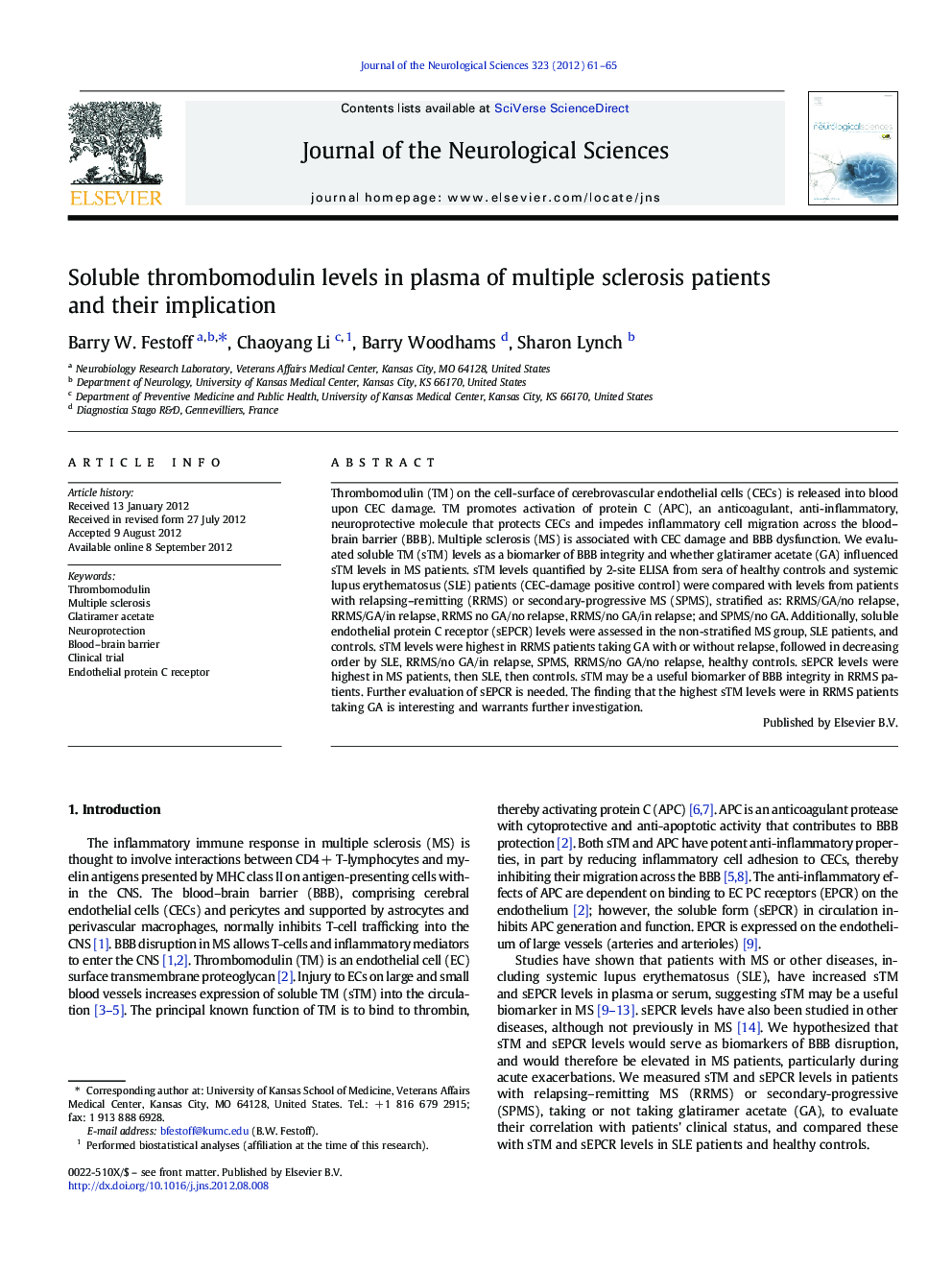| Article ID | Journal | Published Year | Pages | File Type |
|---|---|---|---|---|
| 1913797 | Journal of the Neurological Sciences | 2012 | 5 Pages |
Thrombomodulin (TM) on the cell-surface of cerebrovascular endothelial cells (CECs) is released into blood upon CEC damage. TM promotes activation of protein C (APC), an anticoagulant, anti-inflammatory, neuroprotective molecule that protects CECs and impedes inflammatory cell migration across the blood–brain barrier (BBB). Multiple sclerosis (MS) is associated with CEC damage and BBB dysfunction. We evaluated soluble TM (sTM) levels as a biomarker of BBB integrity and whether glatiramer acetate (GA) influenced sTM levels in MS patients. sTM levels quantified by 2-site ELISA from sera of healthy controls and systemic lupus erythematosus (SLE) patients (CEC-damage positive control) were compared with levels from patients with relapsing–remitting (RRMS) or secondary-progressive MS (SPMS), stratified as: RRMS/GA/no relapse, RRMS/GA/in relapse, RRMS no GA/no relapse, RRMS/no GA/in relapse; and SPMS/no GA. Additionally, soluble endothelial protein C receptor (sEPCR) levels were assessed in the non-stratified MS group, SLE patients, and controls. sTM levels were highest in RRMS patients taking GA with or without relapse, followed in decreasing order by SLE, RRMS/no GA/in relapse, SPMS, RRMS/no GA/no relapse, healthy controls. sEPCR levels were highest in MS patients, then SLE, then controls. sTM may be a useful biomarker of BBB integrity in RRMS patients. Further evaluation of sEPCR is needed. The finding that the highest sTM levels were in RRMS patients taking GA is interesting and warrants further investigation.
